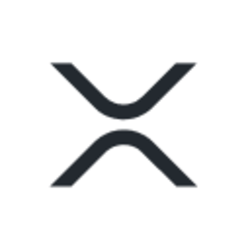-
The EU’s Markets in Crypto-Assets (MiCA) regulation is reshaping the European crypto landscape by fostering compliance and boosting investor confidence.
-
Since its implementation, MiCA has encouraged major exchanges to obtain licenses, signaling a shift toward a more regulated and stable crypto market in Europe.
-
According to COINOTAG sources, MiCA’s stringent reporting and investor protection measures are setting new industry standards that benefit both companies and customers.
MiCA regulation strengthens Europe’s crypto market by enhancing compliance, investor protection, and fostering healthy competition among licensed exchanges.
MiCA Compliance: A Strategic Advantage for Crypto Firms
Adapting to MiCA’s regulatory framework presents both challenges and opportunities for cryptocurrency companies operating in Europe. While the law is still new and lacks a comprehensive compliance blueprint, firms that invest in meeting its requirements gain a competitive edge. Large, established exchanges are better positioned to absorb the costs associated with licensing and regulatory adherence, which include enhanced reporting obligations and stricter Anti-Money Laundering (AML) protocols.
Industry leaders like Bybit EU’s managing director Mazurka Chen emphasize that MiCA compliance is not merely a regulatory hurdle but a strategic investment that can differentiate serious market players from unlicensed competitors. This regulatory environment encourages consolidation, enabling robust exchanges to expand their market share and foster a more trustworthy ecosystem.
Impact on Stablecoin Issuers and Market Consolidation
MiCA’s framework also significantly affects stablecoin issuers by phasing out non-compliant products, thereby creating demand for MiCA-approved stablecoins. This regulatory clarity stimulates innovation within the European stablecoin sector and encourages the development of compliant financial products. Executives from Circle highlight that this shift offers a unique opportunity to cultivate a distinctly European crypto asset market, enhancing both stability and investor confidence.
Investor Protections and Enhanced Market Integrity Under MiCA
For European crypto investors, MiCA introduces critical safeguards that align crypto trading with traditional financial standards. Licensed exchanges benefit from streamlined banking relationships, enabling smoother deposit and withdrawal processes. This improved integration facilitates access for institutional investors, family offices, and trading firms previously hesitant due to licensing uncertainties.
MiCA mandates rigorous consumer protection measures, including strict asset segregation and transparent reporting requirements. These provisions address past industry failures, such as the misappropriation of client funds seen in high-profile cases like FTX, by enforcing stringent controls to safeguard client assets.
Expanding Asset Offerings Through Regulatory Harmonization
The synergy between MiCA and the Markets in Financial Instruments Directive (MiFID) allows crypto exchanges to broaden their product portfolios, incorporating traditional assets like stocks and commodities. This integration not only diversifies investment options but also enhances market integrity by subjecting crypto platforms to established financial regulations, thereby increasing investor trust.
Growing Adoption of MiCA Licenses Among Major Crypto Exchanges
Since MiCA’s enforcement, prominent exchanges such as Coinbase, OKX, and Bybit have secured licenses, signaling strong institutional endorsement of the regulatory framework. This trend reflects a broader industry movement toward compliance and legitimization within the European market.
Bybit CEO Ben Zhou notes that MiCA’s influence extends beyond Europe, with regulators worldwide observing its implementation as a potential model for their own crypto policies. As competition intensifies, exchanges licensed under MiCA are poised to attract a growing customer base seeking regulated and secure trading environments.
Global Regulatory Implications and Market Dynamics
The establishment of MiCA is prompting other jurisdictions to consider similar regulatory frameworks, aiming to balance innovation with investor protection. This global ripple effect underscores the importance of clear, consistent regulations in fostering sustainable growth within the cryptocurrency sector. European exchanges benefiting from MiCA’s clarity are likely to set benchmarks for compliance and operational excellence internationally.
Conclusion
MiCA represents a pivotal development in European crypto regulation, providing a structured and transparent environment that benefits both exchanges and investors. By elevating compliance standards and enhancing investor protections, MiCA is fostering a more resilient and competitive crypto market. As more exchanges obtain licenses and regulatory frameworks evolve globally, MiCA’s influence is expected to extend beyond Europe, shaping the future of crypto regulation worldwide.
